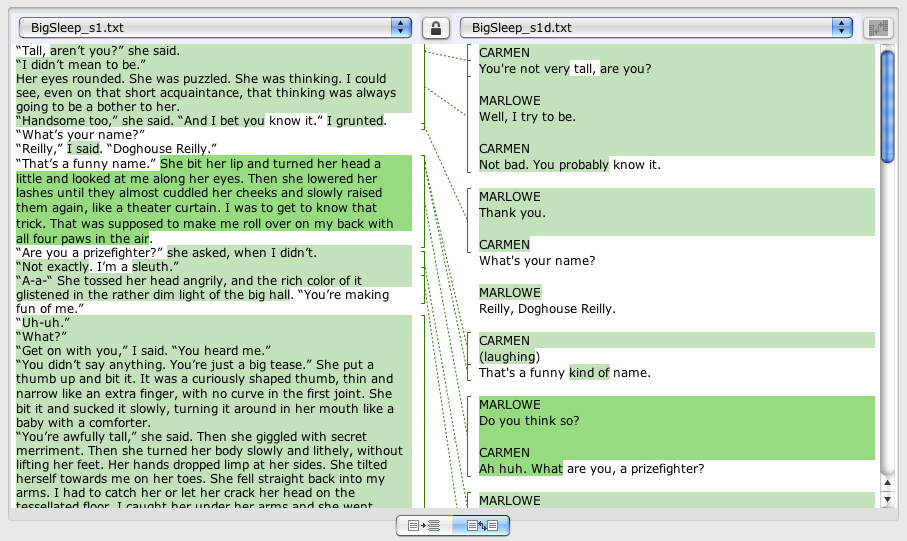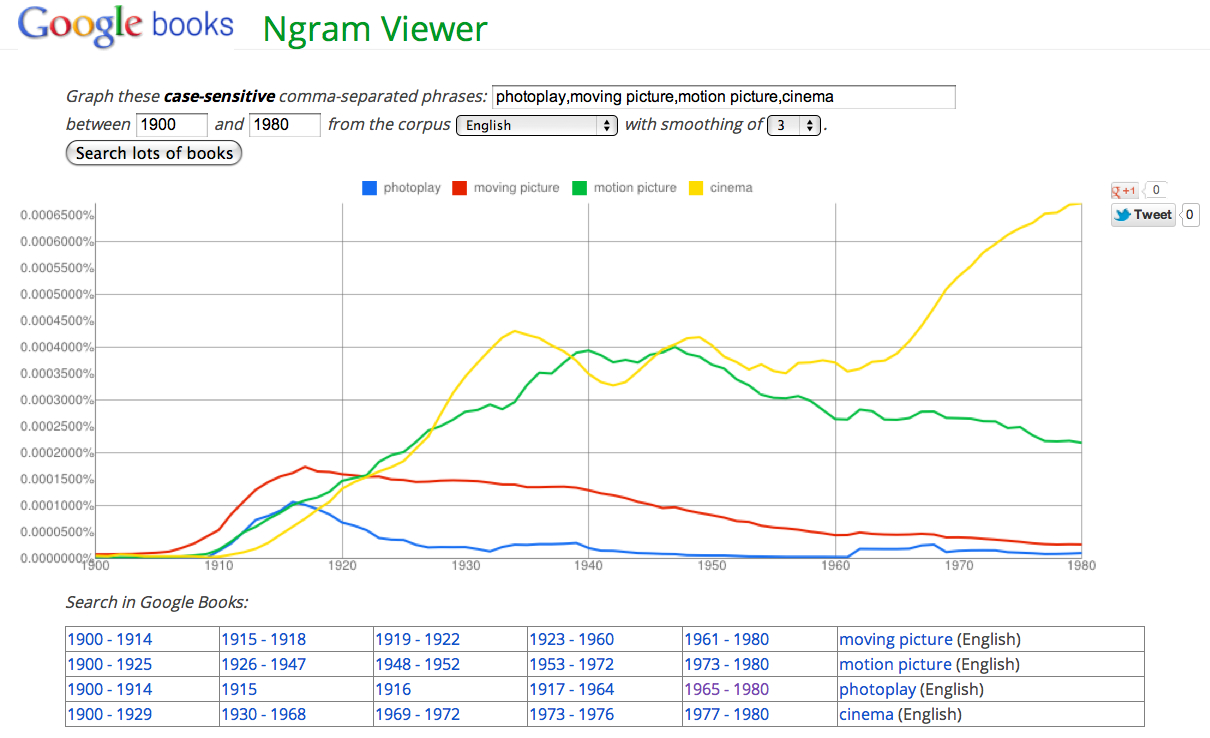I must admit I had trouble navigating Voyant even after watching the help video. Roxanne’s post was a great way of helping me gain an understanding of how the tool could be used and what type of outcome I might receive had I been able to achieve success. I thought my experience with Voyant would be more interesting than it turned out. I entered a series of words, tried to find a corpus that applied and then I tried the reverse but I got nothing. Roxanne’s experience was interesting since the conclusion to her exploration found the most popular word was “said,” which allowed her to make this connection to the heavy use of dialogue. The value of indicators to drawing conclusions proves to be great for building a path to research.
I played with Ngram viewer, a tool I enjoyed not only to see if the data crossed paths at any point but for also for a concept Luisina spoke of in class concerning the visual stimulation. There is something about all the visual representation that I respond to which may or may not be superficial. This tool was also interesting to me since it responded well to my converting back and forth between Spanish language and English language corpus. In my discovery I compared books by Latin American authors from 1965 – early 2000’s. Isabel Allende’s “Eva Luna”, Paolo Coelho’s “The Alchemist”, Mario Vargas Llosa’s “The Storyteller” and Gabriel Garcia Marquez’s “In Evil Hour”. See below where I added the visual difference in the Spanish corpus chart and the English corpus chart.
MALS 78100: Digital Humanities in Research and Teaching
-
Recent Posts
Recent Comments
- Sameen Q. on GeoCommons
- Christina M. Ramos on GeoCommons
- Matthew K. Gold on GeoCommons
- Sameen Q. on Visualization Tools: Many Eyes
- Roxanne Shirazi on Decoding Networks
Archives
Categories
Meta








